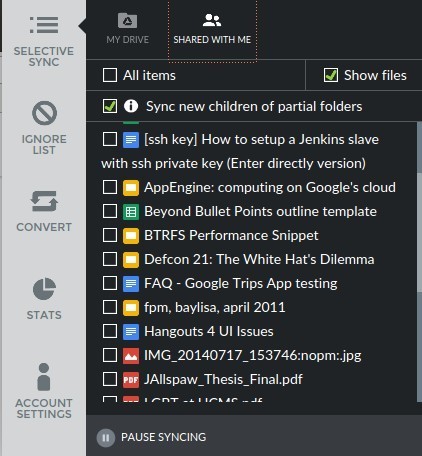Thanks all! I’m in a similar situation.
Here’s my theory about what’s going on:
I think that Google tracks my browsing activity whenever I’m logged in to G+. (That is: almost always!) Anything Google-based I view is noted. That might be viewing a GDOC that someone’s shared from Google Drive (GD) — or embedded in their web page— or a photo that someone posted on their G+ album, or a Google forum entry, or … who knows? Google records the specific item, and, to some extent, the context. If I happen to view a single JPG of a shiny motorcycle, Google will know and remember the album that contained that JPG. This may occur on a web page without any obvious sign of a connection to Google.
In terms of Google Drive activity, yes, as someone here has mentioned, I think this data collection includes the names of long-deleted files and folders. Maybe not just any files and folders: maybe just cases in which a person shares an item from GD to another person with full access, and the recipient subsequently deletes the item. The recipient is saying, “I don’t want this item”, and Google obediently removes it from his/her view, but Google retains the fact that someone shared his item to that recipient in recipient’s data. (And, of course, in the source’s data.)
I’m guessing that this data-gathering is on-going and the records are more or less permanent. (Why? Some of the items I note below are several years old.) Much of the data may be unused until Google figures out how something useful to do with it.
I think Insync has access to all this. Why? Because I see such extraneous items in Insync’s
Selective Sync —> Shared With Me
dialog. Large numbers of these. So many, in fact, I don’t even try to use Selective Sync.
I also think Insync, can see the origin (or “type”) of each item. Why? Because, as far as I can see, Insync currently does an excellent job at syncing only the items that a user can see on his/her GD through the browser interface. So, for me: no more “random shares” are downloaded.
(Not so long ago, in my experience, Insync wasn’t so discriminating. It downloaded large numbers of really shiny JPGs of motorcycles, very expensive automobiles, nature scenes, etc., to my local Insync Folder. Apparently all from one guy in Macedonia who was frequently posting them in his G+ account. Don’t know the guy, never been to his G+ page, not interested in any of the subject material. I’m guessing: at one point I accidentally clicked on a single photo somewhere else, the photo was linked from this guy’s G+ album, and this fact went into the data Google keeps on my browsing. None of these items every showed up in the GD web interface, expect when I found a method of displaying specific items, then those items would be visible)
So… assuming I’m not too wrong about all this: Insync should be able to do a much better job populating the
“Shared With Me” folder/file tree in Selective Sync, limiting the display to only files and folders that are visible to the user through drive.google.com, and —for those of us who have many such extraneous items, making Selective Synch usable.
…FWIW…
UPDATE: I spoke too soon, or something changed since I posted several days ago. Today, I found over 750 files, almost 1GB (!) of unwanted Shiny Motorcycle (and similar) JPGs in my local Insync Folder. These do not show up in Drive Web View. I moved them out of my local Insync Folder, and --for the moment-- Insync seems to be signaling “all sync’d” – it hasn’t replaced those files, as I would expect. I’ll be watching. To repeat my earlier comment it just isn’t practical to uncheck all 750 files, individually, in Selective Sync.
UPDATE 2: Several days later, Insync has not refreshed the ~1GB of Shiny Motorcycle images in my local Insync Folder. Good! The way I understand this technology, this files should have reappeared after I removed them, unless the owner removed the original files or somehow disabled sharing with me. That seems very unlikely, as many months ago I discussed this issue with him and he clearly doesn’t know how to do either.


